How to Frame Art
We all know the feeling; you’ve seen an artwork you love and get that have-to-have-it feeling, only for that feeling to be replaced with dread once you realise that it’s unframed and not ready to hang.
Relax. Framing an artwork doesn’t have to be a hassle or too expensive and is definitely worth it when the job is done well. We’ve done the research for you so you can walk into the framing shop with all the know-how of an expert to get exactly what you want.
But why should you frame art in the first place? Framing your art not only makes it look awesome and ready to hang, it also protects it from people, dust, humidity and other natural elements. Framing can add years to an artwork and increase its value significantly if cared for and chosen correctly. Let’s start with a few basics so you know exactly what you’re buying when shopping for art.
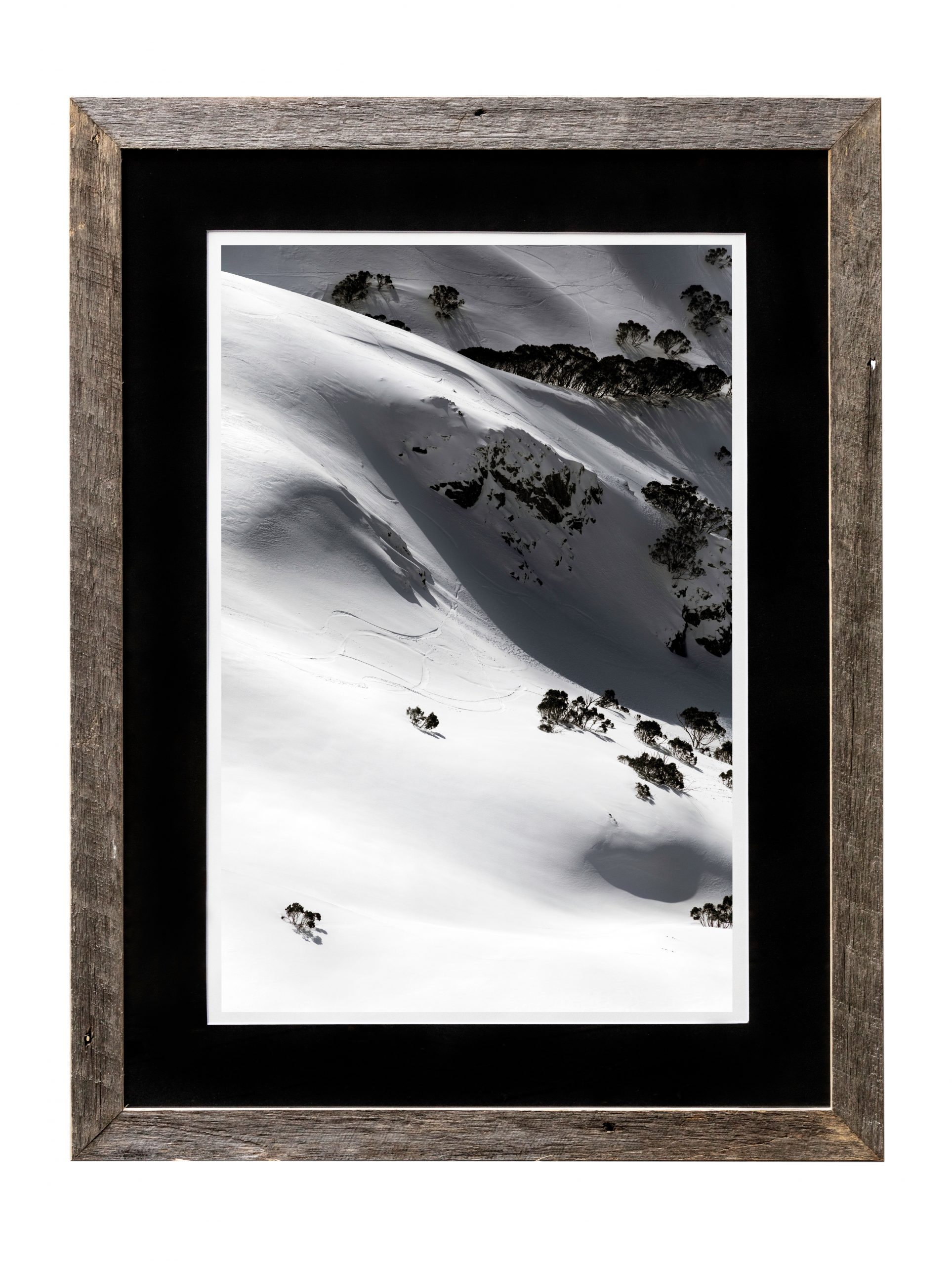
Photographer Penny Prangnell’s Alpine series are framed in a rugged recycled timber to complement the mountainous terrain.
Before You Buy
It’s important to read all the fine print when looking at an artwork online and go in with a little bit of knowledge. For example, ‘ready to hang’ should mean that the artwork is already stretched (if on a canvas) or framed and has all the hooks and wires necessary so you only need to find a place on your wall.
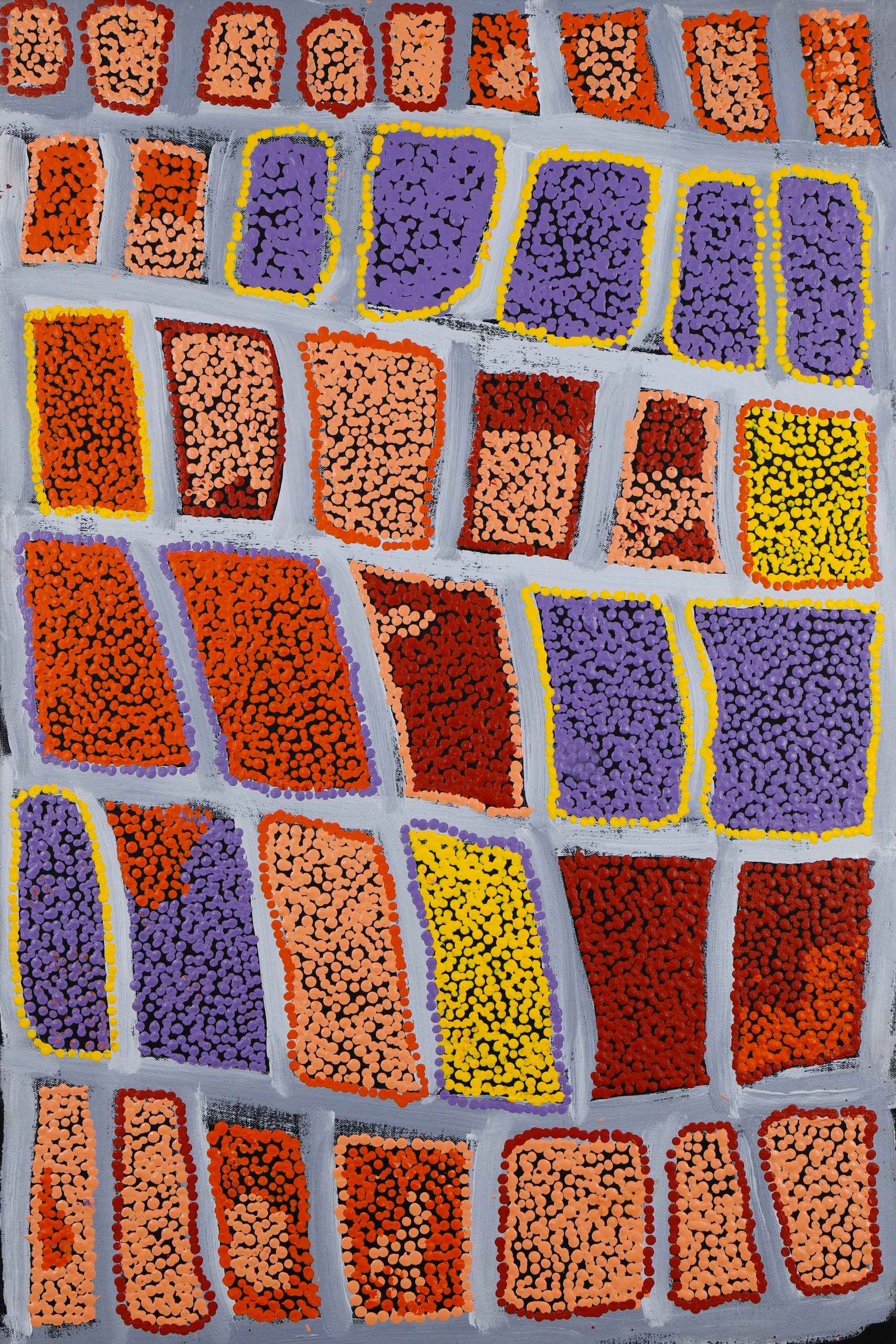
Tali, 681-19 by Lucy Loomoo from Warlayirti Artists in Balgo, WA. This unframed canvas from a remote community can easily and affordably be stretched onto a timber frame.
Drawings or paintings on paper rarely come framed unless purchased from a physical art gallery, due to the difficulty of shipping without breaking the glass in the frame. Indigenous art direct from artists in small communities is generally painted on unstretched canvas, meaning it’s not already mounted onto a timber frame. Due to the remote locations framing is very difficult and shipping is much easier and less likely to damage the work when the art is rolled up in a tube.
Choosing A Framer
Asking people in your area for recommendations is a good way of finding a quality framer. This way you can hear first-hand experiences of how accommodating a place is and how easy the framing process was.
Otherwise, look for a member of the Picture Framers Guild Australia (PFGA), which upholds certain standards for framing art. Always listen to the information a framer is passing onto you – if they can’t answer your questions adequately or don’t provide detailed information on the materials available, they may not be the right framer for you. Remember, it’s always best to shop around and feel comfortable with your choice before handing your money and your artwork over.
Choosing the Materials for Your Frame
Framing should enhance and compliment an artwork. Instead of choosing a frame because it looks great, consider how it will look around the artwork and how it will work with the colours, textures and subject matter. For example, if an artwork is heavily textured a simple frame will often look best.

The frame for this piece by Erin Nicholls mirrors the Japanese style of the painting.
Also consider the décor of the room the artwork will be in, particularly the colour of the wall it will be hung on. Do you have a contemporary or modern décor? Is your room brightly coloured or industrial?
The most important thing is you like the artwork in the frame you choose. Experiment until you find a combination you are happy with. If in doubt, your framer can help, or opt for something simple to play it safe. You could also ask the artist what type of frame they’d recommend for the piece.

Marnie McKnight featured with her signature style of abstract painting framed in Tasmanian oak. If you’re hesitant about which frame looks best, the artist is a great source of advice and inspiration!
The Other Elements of the Frame
An artwork framed with glass over the top should always have a mat board or spacer so the art doesn’t stick to the glass over time. Mat boards also provide a border between the art and the frame to draw the viewer’s eye to the piece.
When framing – especially art on paper – it’s important to ensure the backing, mount and mat (or spacing) are made of materials with low acid levels so the artwork doesn’t deteriorate over time. Quality mat materials like cotton are acid-free but more expensive. Better value materials include wood pulp that is chemically treated to reduce acidity. Mat boards come in a range of different colours and can be layered for effect. If in doubt, choose a single layer in an off-white to ensure it doesn’t deter from the artwork itself.
When choosing the glass, there are a number of options including anti-glare, scratch resistant and UV filters. The cheapest option is acrylic, but obviously doesn’t have the same quality finish. The most common is regular glass, without all the bells and whistles, but protects the artwork well.
What About Framing a Canvas?
Canvas artworks are great as they can be framed internally using much more affordable materials so is a better value option and looks fantastic. You can either gallery wrap, or stretch the canvas around a timber frame. A gallery wrapped canvas has the artwork on the sides of the internal frame, whereas on a stretched canvas the whole piece is viewable when standing front-on. The sides of a stretched canvas will often be painted one colour. Stretched canvases can either be mounted in a deep frame or like a gallery wrap hung without an external frame.

Unpopular Penguin 64 by Ben Tankard. A gallery wrapped canvas where the painting carries on to the wall.
Now you have all the know-how to confidently buy an unframed artwork, whether it’s a painting on unstretched canvas from the Western Australian desert or a street art paste-up from inner Melbourne. Browse new art on Bluethumb without the fear of buying something that isn’t ready to hang.

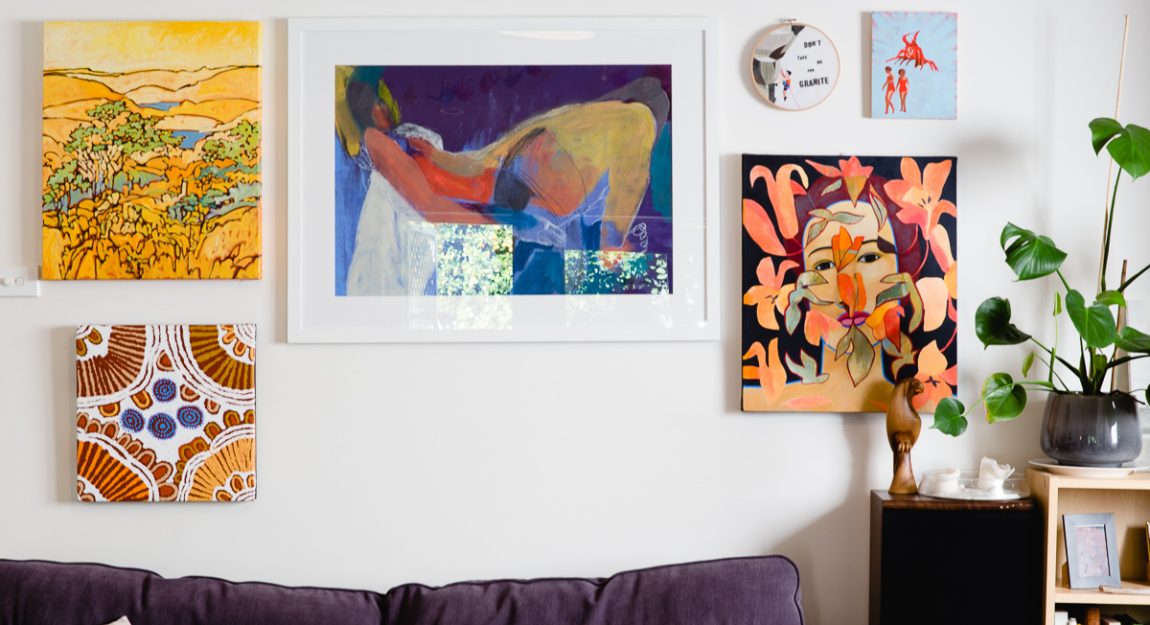

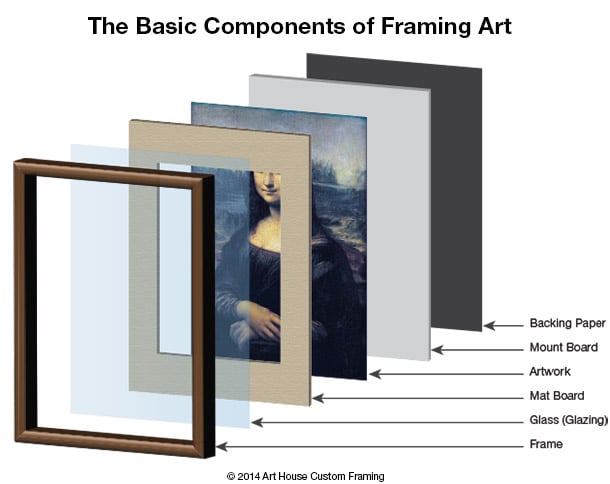
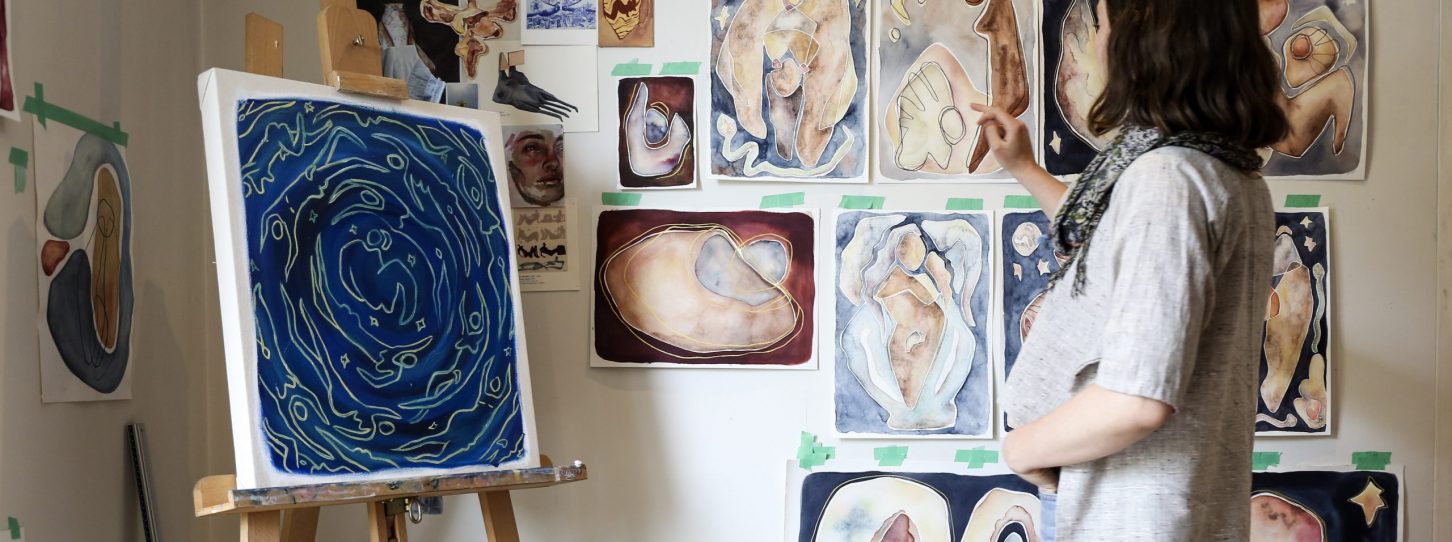
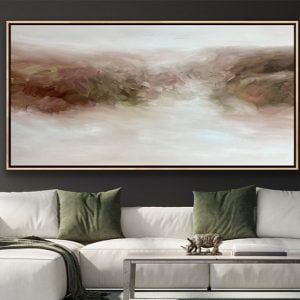










Do buyers have any opinions on handmade framing? Is it seen as ok or a big no no?
Hi Jacquie,
Handmade framing is very subjective and depends completely on how the buyers have envisaged the piece in their homes. If this is discussed prior to the purchase, this could be another customisation and give a more personalised experience to the buyers.
Feel free to send some pictures of the frames through to us to have a look – help@bluethumb.com.au
Please let us know if you have any other question about framing, or anything else at all.
Sheeraz
Thanks bluethumb for the drtails on framing. It was very interesting. Ive just started to frame my art works. Have found a fabulous framer in my suburb. Kind regards Sandra Messner.
Thanks for the article.
When buying an unstretched canvas, is there anything in gallery framing it that could damage the work by wrapping the edges around the frame instead of using the whole canvas size?
It sounds like gallery framing and stretching could both be used but could there be anything in how the work was prepared that would mean that wouldn’t work?
Thanks
A number of years ago my art teacher and the conservators at the Art Gallery of NSW were recommending that oils in Australia were best conserved by sticking to masonite. They claimed that the classic European technique of stretching canvas had led to the poor condition of works by Arthur Streeton due to constant stretching and shrinking. Obviously this is not a problem in galleries as they are climate controlled.
Has this view changed?